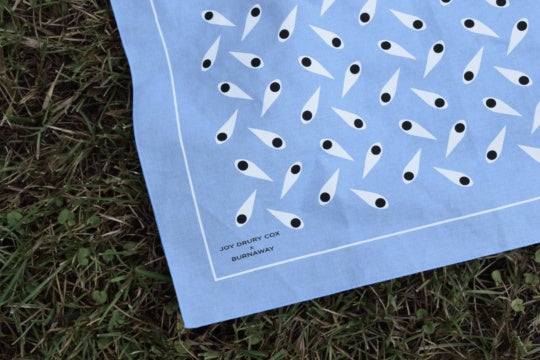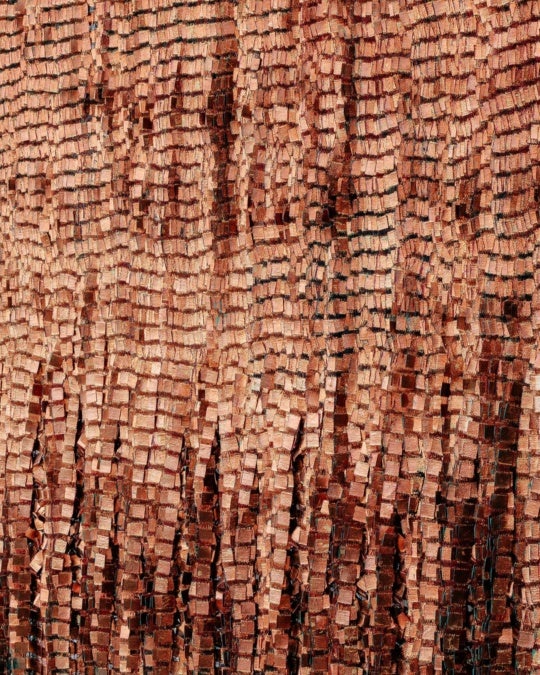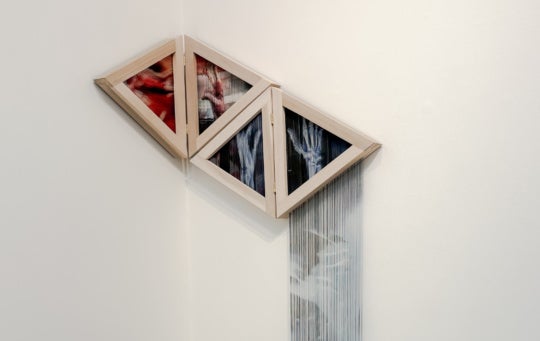
What is craft in the digital age? How do the visual and material arts inform each other? What happens at the intersections of photography and craft?
These questions are among the fundamental provocations behind photo+craft, a four-day event opening later this month at venues throughout Asheville, North Carolina. The event seeks to investigate the points of contact—and of productive friction—between these two vast domains of creative endeavor.
I recently had the opportunity to speak with Fred Ritchin, Dean of the School at the International Center of Photography in New York. He is one of photo+craft’s two keynote presenters, each of whom will take on one of the disciplines under consideration; his counterpart keynote speaker is Namita Gupta Wiggers, cofounder of the online Critical Craft Forum. A longtime photography critic and authority on visual culture, Ritchin is the author of such seminal volumes as In Our Own Image: The Coming Revolution in Photography (first published in 1990, with revised editions in 1999 and 2010) and After Photography (2008). His most recent book is Bending the Frame: Photojournalism, Documentary, and the Citizen (2013); “Bending the Frame” is also the title of his photo+craft talk.
Our conversation took shape largely around the question of how photography and craft relate (if they do), and the inevitable subject of the impact of digital media, not only on photography but on culture and modes of perception and thought. Digitalization has of course profoundly affected our relations with the analog, the handmade, the unique—the ostensible essentials of “craft.” (Ritchin sometimes asks his photography students: “Is there anything in this classroom that’s one-of-a-kind, besides yourselves?” The question, he notes, is often met with silence.)
But can craft be defined differently—might it be about something more or other than hand-rendering and materiality? With regard to photo media, Richin says: “The argument these days with digital is that there’s very little craft in photography. And the argument with analog is that there’s a lot of craft in it. But I think there are different skill sets needed in digital. What do we do, for example, with the two billion images that are currently generated in the world per day? How do we edit them? Select them? Curate them? Figure out how to present them? That itself becomes a kind of craft.”
Yet Ritchin also suggests a basic existential difference between photography and craft. Since even before the advent of digitalization, he says, photography has played a central role in the splintering of our awareness—a process that is decidedly ongoing in our digital era. From its beginnings, “photography fragmented the universe into little rectangles captured over a fraction of a second. Photography, as a fragmentation device, is really good,” he says. “But fragmentation isn’t really what craft is about. Craft is a continuous process of trying to create something. There is an engagement with process—a beginning, middle, and end—that is not always there with photography.”
In his book Bending the Frame, Ritchin issues a number of radical challenges. One is to see and use photography as a socially proactive agent, rather than a merely reactive one—he posits, for example, a “photography of peace” (as opposed to “war photography”). He calls on us to expand the parameters of our imaginations, to fully exploit the potentials of digital media and move toward new ways of depicting and seeing. When we spoke, he noted that historically this has been the challenge at the dawn of every new medium: “You don’t have to simulate the analog; you can do it differently. All new media seem to replicate the previous ones—until they get their feet, so to speak, on the ground. Early photography in the 19th century was a lot about painting, and I think that digital imaging right now is a lot about conventional photography.”

Asheville was the neighboring hub of the legendary Black Mountain College, and today the city is home to the Black Mountain College Museum + Arts Center, devoted to maintaining the college’s archive and sustaining its spirit. Ritchin recently visited the exhibition “Leap Before You Look,” a survey of BMC’s extraordinary life and legacy (it opened at Boston’s Institute of Contemporary Art and is currently touring). Although the college closed in 1957, the show successfully renders a sense of an electrifying environment where, it might be said, medium was subordinate to process and idea, and where the distinctions among media—photography vs. craft, for example—were therefore more or less immaterial. “Black Mountain College was about teaching open-ended processes,” Ritchin says. “People went where they went with it; they weren’t trying to be like someone or something else. . . . What I find troubling in education now is that often we’re content simply to teach traditions that already exist—as opposed to open-ended processes that can be used in order to get somewhere else.”
Ultimately, Ritchin views the “digital revolution” as affecting far more than digital media. “I think it’s dialectical,” he says. “The new medium frees the older medium. It’s not just the new medium that is revolutionary; it causes something of a revolution in the older ones, too.” The revolution, in other words, will not be minimized.

Ritchin’s talk will take place on April 1 at Asheville’s Broadway Arts Building. Among the other participants at photo+craft are photographers Alejandro Cartagena and Clarissa Sligh, who will speak about “Making and Meaning: Photobooks and the Social Fabric”; filmmaker Harvey Wang, screening his 2014 documentary From Darkroom to Daylight; and artists James Huckenpahler, Vesna Pavlović, and Elijah Gowin, forming a panel to address “Ghosts in the Machine: Finding Craft in the Digital.”
Exhibitions will be presented in and around Asheville, including Steve Mann’s “Orthogonal Convergences” at Pink Dog Creative; and the Henco Gallery group show “Authentic Constructions,” featuring work by Janelle Young, Christina Z. Anderson, Constance Thalken, and duo Lindsay Lochman and Barbara Ciurej. Photographer Robert Asman will offer a workshop in cameraless photography techniques, and acclaimed photo-printer Rocky Kenworthy will host a tour of his Dot Editions studio. In addition, eminent collectors Hedy Fisher, Randy Shull, and David Raymond will gather as a panel at Asheville’s Black Mountain Museum + Arts Center to discuss the considerations of building an art collection.
With photo+craft, Asheville shows itself to be a vibrant nexus of creativity and critical thinking: a community of artists, makers, photographers—and everything in between.
Photo+craft, sponsored by Warren Wilson College, will take place at venues throughout Asheville, North Carolina, March 31–April 3. For further information, go to photocraftavl.com
Diana C. Stoll is a writer and editor based in Asheville. She is the coauthor of The Desert and the Cities Sing, forthcoming this fall from Chronicle Books.




